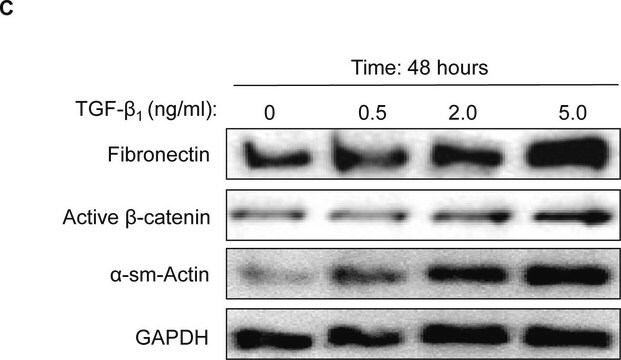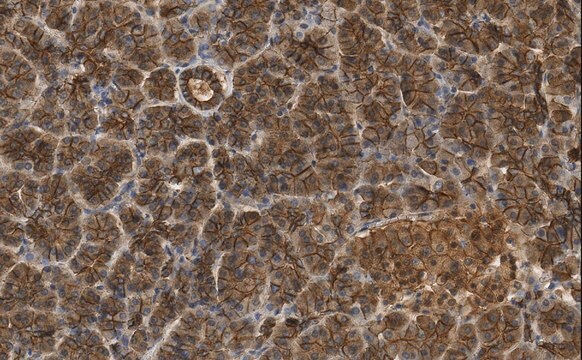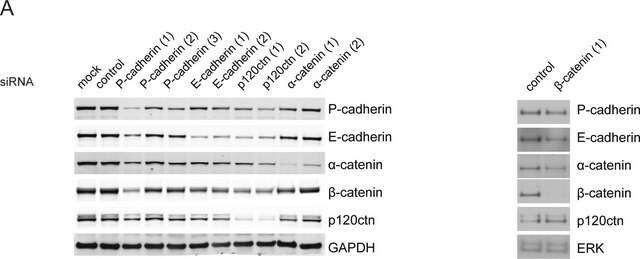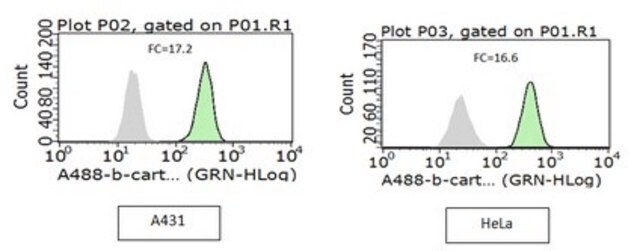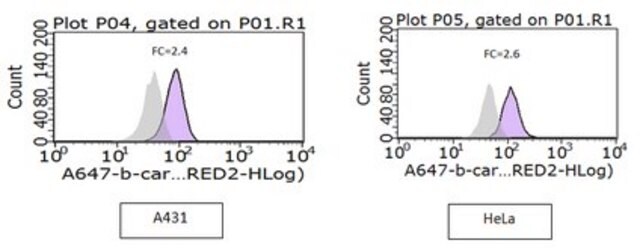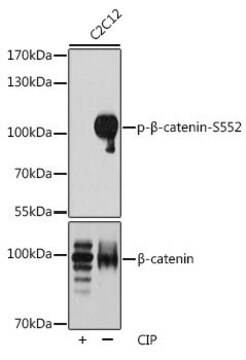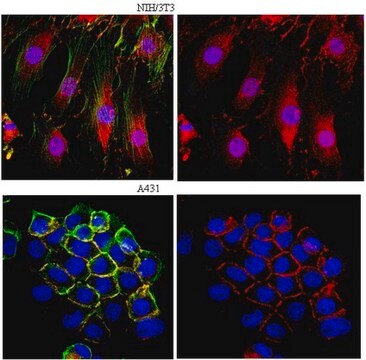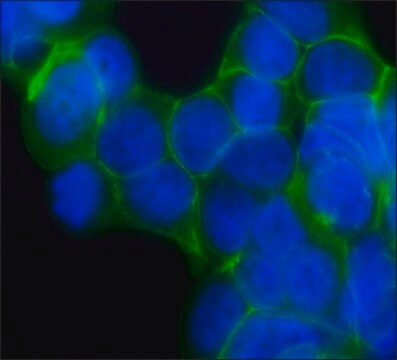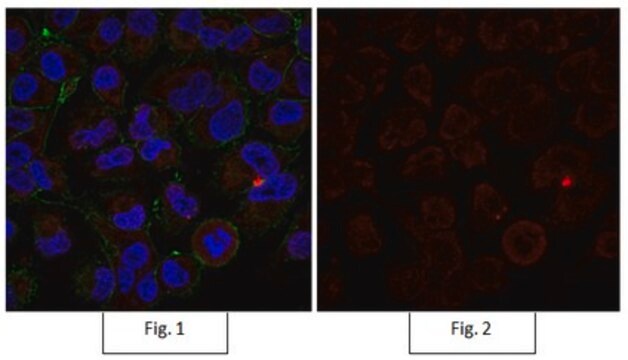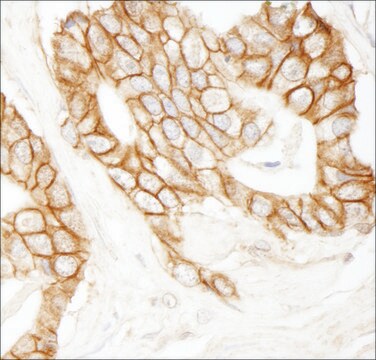06-734
Anti-β-Catenin Antibody
Upstate®, from rabbit
Sinônimo(s):
catenin (cadherin-associated protein), beta 1 (88kD), catenin (cadherin-associated protein), beta 1 (88kDa), catenin (cadherin-associated protein), beta 1, 88kDa
About This Item
Produtos recomendados
fonte biológica
rabbit
Nível de qualidade
forma do anticorpo
purified immunoglobulin
tipo de produto de anticorpo
primary antibodies
clone
polyclonal
reatividade de espécies
human, rat, rabbit, bovine, mouse
embalagem
antibody small pack of 25 μg
fabricante/nome comercial
Upstate®
técnica(s)
immunocytochemistry: suitable
immunoprecipitation (IP): suitable
western blot: suitable
Isotipo
IgG
nº de adesão NCBI
nº de adesão UniProt
Condições de expedição
ambient
modificação pós-traducional do alvo
unmodified
Informações sobre genes
human ... CTNNB1(1499)
mouse ... Ctnnb1(12387)
rat ... Ctnnb1(84353)
Descrição geral
β-Catenin is composed of three domains: a central armadillo repeat domain and two N- and C-terminal tails. β-catenin can be phosphorylated by serine-threonine kinase, such as GSK-3. The phosphorylated β-catenin affects the protein association of β-catenin to E-cadherin and α-cateinin that occurs in the cell. This process can be reversed by de-phosphorylation of β-catenin.
Especificidade
Imunogênio
Aplicação
5 μg of a previous lot immunoprecipitated β-Catenin from 500 μg of A431 membrane fraction lysate.
Immunocytochemistry:
1-5 μg/mL of a previous lot showed positive immunostaining for β-catenin at cell-cell junctions of A431 cells fixed with 4% paraformaldehyde and permeabilized with 0.25% Triton™ X-100.
Immunocytochemistry Analysis: A 1:100 dilution of this antibody detected beta-Catenin in A431 and HUVEC cell lines.
Epigenetics & Nuclear Function
Transcription Factors
Qualidade
Western Blot Analysis:
0.1-1 μg/mL of this lot detected β-catenin in an A431 total cell lysate.
Descrição-alvo
forma física
Armazenamento e estabilidade
Handling Recommendations: Prior to removing the cap, centrifuge the vial and gently mix the solution.
Nota de análise
Positive Antigen Control: Catalog #12-301, non-stimulated A431 cell lysate. Add 2.5µL of 2-mercaptoethanol/100µL of lysate and boil for 5 minutes to reduce the preparation. Load 20µg of reduced lysate per lane for minigels.
Outras notas
Informações legais
Exoneração de responsabilidade
Não está encontrando o produto certo?
Experimente o nosso Ferramenta de seleção de produtos.
recomendado
Código de classe de armazenamento
12 - Non Combustible Liquids
Classe de risco de água (WGK)
WGK 1
Ponto de fulgor (°F)
Not applicable
Ponto de fulgor (°C)
Not applicable
Certificados de análise (COA)
Busque Certificados de análise (COA) digitando o Número do Lote do produto. Os números de lote e remessa podem ser encontrados no rótulo de um produto após a palavra “Lot” ou “Batch”.
Já possui este produto?
Encontre a documentação dos produtos que você adquiriu recentemente na biblioteca de documentos.
Os clientes também visualizaram
Nossa equipe de cientistas tem experiência em todas as áreas de pesquisa, incluindo Life Sciences, ciência de materiais, síntese química, cromatografia, química analítica e muitas outras.
Entre em contato com a assistência técnica